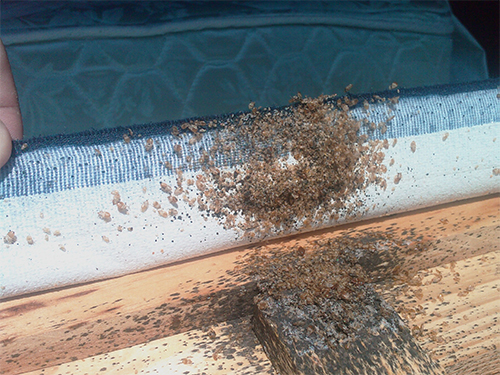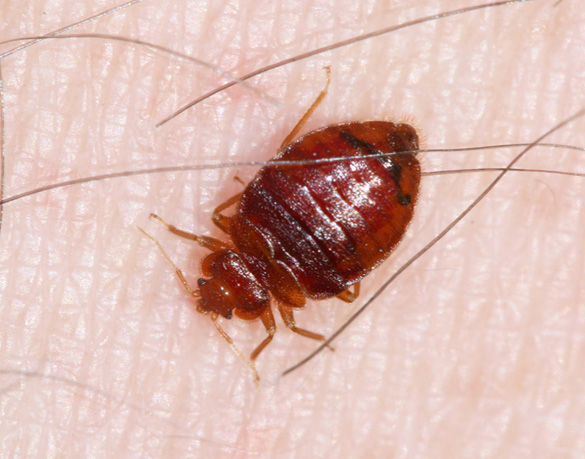How to Identify Bed Bug Bites and Prevent Future Infestations
How to Identify Bed Bug Bites and Prevent Future Infestations
Blog Article
Get Educated Regarding the Kinds of Parasite Control Techniques and Their Benefits for Homeowners
Comprehending the various insect control techniques readily available to house owners is important for efficient pest administration. Homeowners who are well-informed can make strategic options that not only address bug concerns however likewise improve the general top quality of their living environment.
Chemical Pest Control Techniques
Chemical insect control techniques are a critical component of integrated pest management techniques for home owners looking for reliable services to pest infestations. These methods include the application of chemical materials created to remove or discourage bugs that endanger personal effects, health and wellness, and comfort. Common chemicals made use of consist of insecticides, fungicides, rodenticides, and herbicides, each tailored to target details insects.
The key benefit of chemical insect control is its rapid efficiency; several solutions supply immediate outcomes, decreasing pest populaces dramatically quickly. In addition, breakthroughs in chemical formulations have actually brought about products that are a lot more environmentally friendly and have reduced poisoning degrees for non-target organisms when used appropriately.

Organic Parasite Control Strategies
All-natural insect control methods have actually gained importance as homeowners seek much safer and extra lasting options to traditional chemical methods. Organic bug control strategies make use of natural killers, parasites, or pathogens to handle insect populations effectively. This method is not only eco-friendly but likewise lessens the threat of damage to non-target species, consisting of valuable pests and wild animals.
One of the most usual biological control approaches entails presenting all-natural predators into the atmosphere. For instance, ladybugs can be used to regulate aphid populations, while nematodes target soil-dwelling pests like grubs. Additionally, parasitoids-- microorganisms that survive or within a host-- can be used to manage particular parasite types by laying eggs inside them, ultimately causing their demise.
An additional method is the usage of biopesticides, which are originated from all-natural materials such as minerals, bacteria, or plants (bed bug exterminator). These products can effectively target pests while posturing marginal risk to humans and pets. Generally, biological pest control methods supply homeowners with an efficient methods of parasite administration that lines up with environmental principles, promoting a much healthier living setting while decreasing dependence on synthetic chemicals
Mechanical Parasite Control Approaches
Mechanical pest control techniques encompass a range of approaches that literally prevent or get rid of bugs without using chemicals. These strategies are particularly advantageous for home owners looking for ecologically pleasant choices while making sure the safety of their home.
One typical approach is using obstacles, such as traps, screens, and webs, which stop parasites from going into homes or specific areas. Mounting window displays can effectively keep pests out, while utilizing physical obstacles around yards can deter larger bugs like rabbits or deer. Additionally, mechanical traps designed for rats can capture and remove these pests without the requirement for hazardous materials.
One more effective approach involves making use of brooms and vacuums to get rid of insects straight from surfaces. Routine cleaning and maintenance can dramatically lower insect populaces by eliminating food sources and pest control license concealing spots. Employing devices like ultrasonic parasite repellents can discourage numerous parasites with sound waves that are undesirable to them yet faint to humans.
Social Parasite Control Practices
Cultural pest control techniques focus on modifying the environment and management strategies to develop problems that are less for pest infestations. These practices are basic in maintaining a balanced ecological community and reducing the reliance on chemical treatments. By changing farming methods, homeowners can efficiently discourage insects while advertising plant wellness.
One typical approach consists of plant turning, which disrupts the life process of insects by changing the sorts of plants expanded in a details area (bed bug exterminator). This not only reduces pest populaces but additionally enhances soil health. In addition, intercropping-- planting varied crops in proximity-- can perplex insects and decrease their capacity to locate their recommended host plants
Water administration is an additional important element of social practices. Correct watering methods can avoid standing water, which acts as a breeding place for insects and various other insects. Keeping tidiness in and around the home, such as on a regular basis eliminating particles and my response food waste, can considerably lower bug attraction.
Integrating these social techniques into an extensive bug monitoring strategy allows home owners to develop an atmosphere that naturally prevents bugs, thus boosting the performance of various other control techniques while advertising sustainable horticulture and landscaping.

Integrated Bug Management Approaches
Integrated Pest Administration (IPM) stands for an all natural method that integrates various methods to properly take care of pest populaces while decreasing environmental influence. This technique integrates biological, cultural, physical, and chemical methods to accomplish sustainable bug control. By examining pest populaces and their natural adversaries, IPM stresses surveillance and recognizing pests before executing control procedures.
One of the core principles of IPM is making use of limits, which develop the level of parasite activity that calls for treatment. This guarantees that treatments are used only when essential, lowering the reliance on chemical pesticides. Biological control methods, such as presenting natural predators or parasites, see this website operate in combination with social techniques like crop turning and habitat manipulation to interrupt pest life process.
In addition, IPM urges the usage of least-toxic chemical choices when intervention is necessary, focusing on items that posture minimal danger to non-target microorganisms and the atmosphere. For house owners, taking on IPM comes close to not only enhances the effectiveness of insect administration but likewise promotes a healthier living setting, fostering biodiversity and decreasing chemical direct exposure. Eventually, IPM empowers homeowners to make educated decisions that stabilize insect control with ecological duty.
Verdict
In conclusion, understanding the numerous parasite control methods empowers home owners to make informed decisions regarding pest administration. Each method-- chemical, organic, mechanical, social, and incorporated pest monitoring-- offers distinct benefits that provide to various requirements and preferences.
Recognizing the numerous bug control techniques readily available to home owners is essential for reliable insect management.Chemical parasite control techniques are a vital component of integrated bug administration methods for property owners looking for reliable options to pest problems. On the whole, biological pest control strategies supply property owners with a reliable means of bug administration that straightens with eco-friendly concepts, promoting a healthier living atmosphere while decreasing dependence on synthetic chemicals.
Social insect control practices concentrate on changing the environment and management methods to produce problems that are less favorable to pest invasions.In conclusion, comprehending the various pest control methods equips home owners to make educated decisions concerning pest monitoring.
Report this page